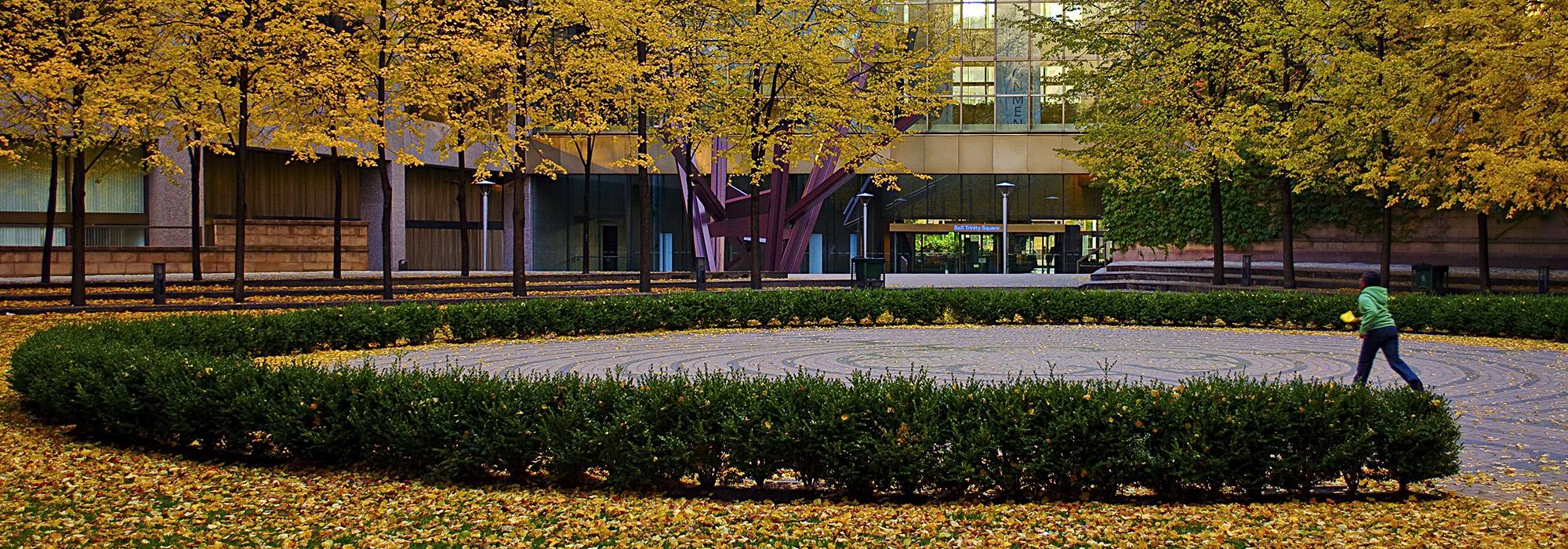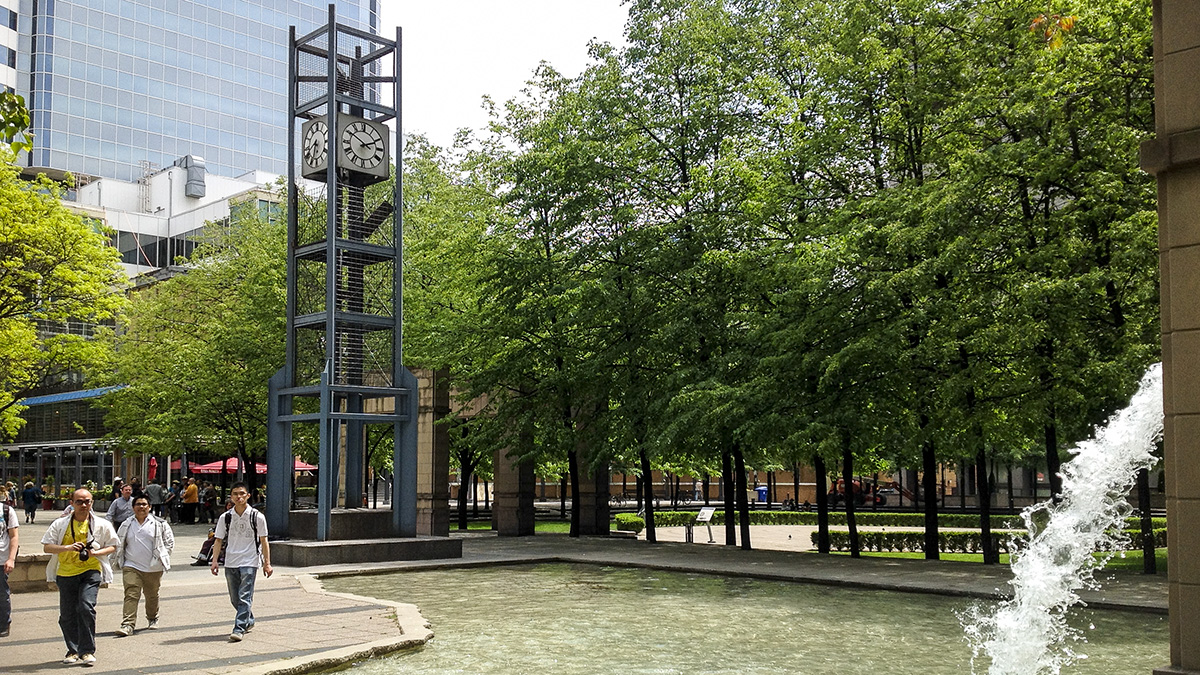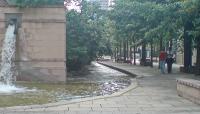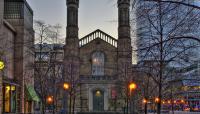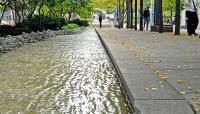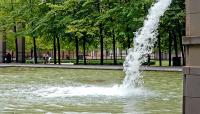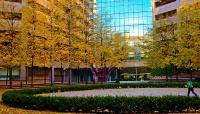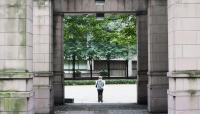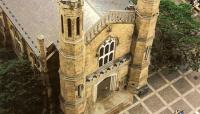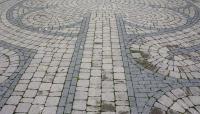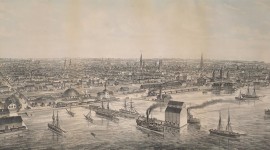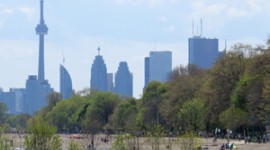Occupying densely urban downtown Toronto, this site was originally a farm at the fork of Taddle Creek bordered by a forested swamp on the outskirts of town when it was secured in 1845 for the construction of the Church of the Holy Trinity. Bishop John Strachen commissioned, architect Henry Lane to design a cruciform Gothic structure with two towering turrets. Twenty years later, Timothy Eaton established a dry-goods store nearby, one that, by 1919, had expanded to occupy 24 hectares comprising warehouses and factories enveloping the site. Weathering the Depression, by the mid 1960s Eaton’s industry was failing and the owners began to transform the area into a commercial and office complex.
In 1981, Moorhead Fleming Corban McCarthy Landscape Architects and the Thom Partnership were commissioned by the City to design Trinity Square. The small (110 x 90 meter) park between the church and the newly built Eaton Centre shopping complex comprises three distinct yet connected spaces: Sited on a geometrically paved plaza and surrounded by high rise buildings, the church is the terminating point on the axis from Bay Street accessed via a linear pedestrian route defined by an allée, shallow pool, and fountain. Adjacent, a terraced, rectilinear lawn bordered by a double allée of lindens was sunken below grade to create a secluded respite from the urban surroundings. Fronting the Centre, a triangular plaza provides the setting for Communications, a sculpture by Haydn Llewellyn Davies. In 1986, Trinity Square received the National Award of Excellence from the Canadian Society of Landscape Architects. In 2005, the Labyrinth Community Network installed a labyrinth modeled on one in Chartres.



